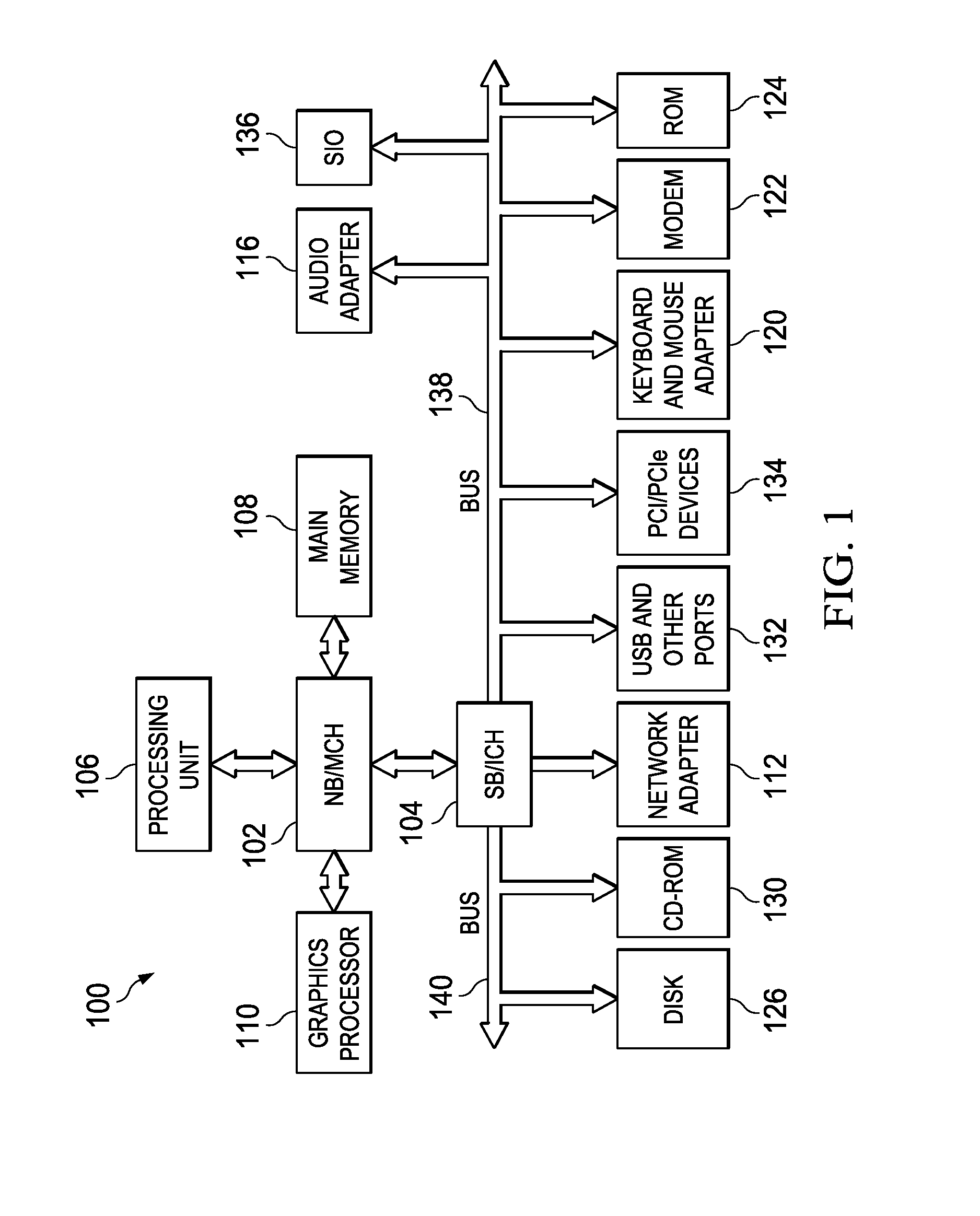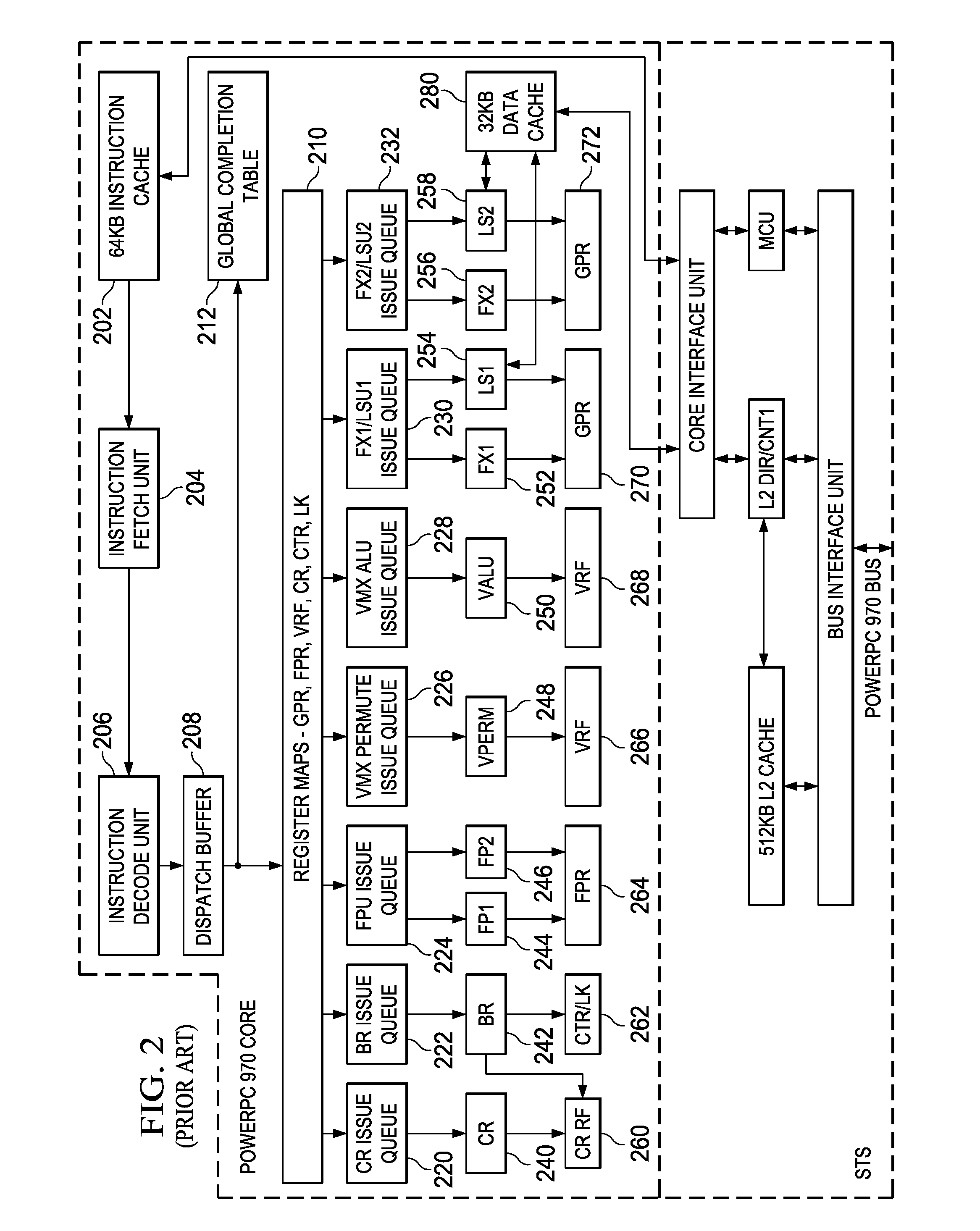Dynamic Data Driven Alignment and Data Formatting in a Floating-Point SIMD Architecture
a data alignment and data format technology, applied in the field of data processing apparatus and methods, can solve the problems of limited functionality, inability to encode boolean values and control words, and insufficient utilization of pure breed floating point simd instruction sets in practice, and achieve the effect of minimizing the amount of data shifting
- Summary
- Abstract
- Description
- Claims
- Application Information
AI Technical Summary
Benefits of technology
Problems solved by technology
Method used
Image
Examples
Embodiment Construction
[0031]The illustrative embodiments provide mechanisms for dynamic data-driven alignment and data formatting in a floating-point SIMD architecture, including aligning enhanced precision vectors based on reduced precision data storage addresses. The mechanisms of the illustrative embodiments provide a floating point (FP) only single instruction multiple data (SIMD) architecture that is capable of handling comparisons, Boolean operations, vector selection based on such comparisons and / or Boolean operations, dynamic data-driven alignment, and flexible data rearrangement. The mechanisms of the illustrative embodiments provide such capabilities to a compiler having an optimizer and code generator adapted to use these capabilities. Moreover, the mechanisms of the illustrative embodiments further handle different floating point formats with efficient encoding and detection of alignment control words.
[0032]The illustrative embodiments provide a data representation for floating point only dat...
PUM
 Login to View More
Login to View More Abstract
Description
Claims
Application Information
 Login to View More
Login to View More - R&D
- Intellectual Property
- Life Sciences
- Materials
- Tech Scout
- Unparalleled Data Quality
- Higher Quality Content
- 60% Fewer Hallucinations
Browse by: Latest US Patents, China's latest patents, Technical Efficacy Thesaurus, Application Domain, Technology Topic, Popular Technical Reports.
© 2025 PatSnap. All rights reserved.Legal|Privacy policy|Modern Slavery Act Transparency Statement|Sitemap|About US| Contact US: help@patsnap.com



